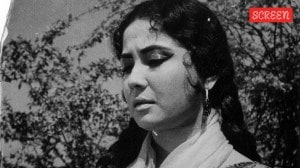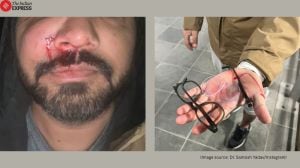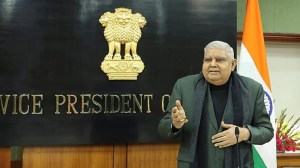Dig, discover and experience a 2,500-year-old civilisation in a Gujarat museum
The Vadnagar Archaeological Experiential Museum opens to the public on February 1
 : Pots excavated from Vadnagar by the Archaeological Survey of India at the Vadnagar Archaeological Experiential Museum. (Express photo by Bhupendra Rana)
: Pots excavated from Vadnagar by the Archaeological Survey of India at the Vadnagar Archaeological Experiential Museum. (Express photo by Bhupendra Rana)Walk over an archaeological site, feel the earth and dig out pieces from “history” — is what a tour of the Vadnagar Archaeological Experiential Museum in Gujarat’s Vadnagar promises visitors.
The museum, which will open to the public on February 1, was formally inaugurated by Union Home Minister Amit Shah on January 16. Online bookings are expected to commence soon, museum authorities said. Built at an estimated cost of Rs 300 crore, it was developed by the Union culture ministry and various departments under the Gujarat government.
The museum conjoins an actual excavated site, where one can see the remains of a 2,500-year-old ancient town. To keep visitors engaged from the museum’s ticketing and waiting lounge itself, a sensor-based floor map keeps projecting a self-guided virtual tour of this Mehsana district town, also the birthplace of Prime Minister Narendra Modi.
Real excavation sites and replicas
Of the museum’s 13,500 square metres, an area of 3,400 sq m comprises actual excavation sites: visitors can see the remains of an actual fort wall and the actual archaeological site, located next door. In the museum, visitors can walk on a glass floor installed over a replica of the site next door. This replica includes a section of the street showing how the town and its activities evolved. The museum also contains a recreated brahman sheri (a narrow lane) at Ghaskol, a small Buddhist monastery that was excavated recently. To recreate the sheri in the museum, two layers of terracotta bricks have been stacked in the manner as they were found during the excavation.
For the experiential part of the tour, a medium-sized excavation pit has been created inside the museum. Here, visitors are encouraged to use the available archaeological tools “to excavate real objects”, besides trying their hands on the mortar and pestle, and the miniature stone grinder.
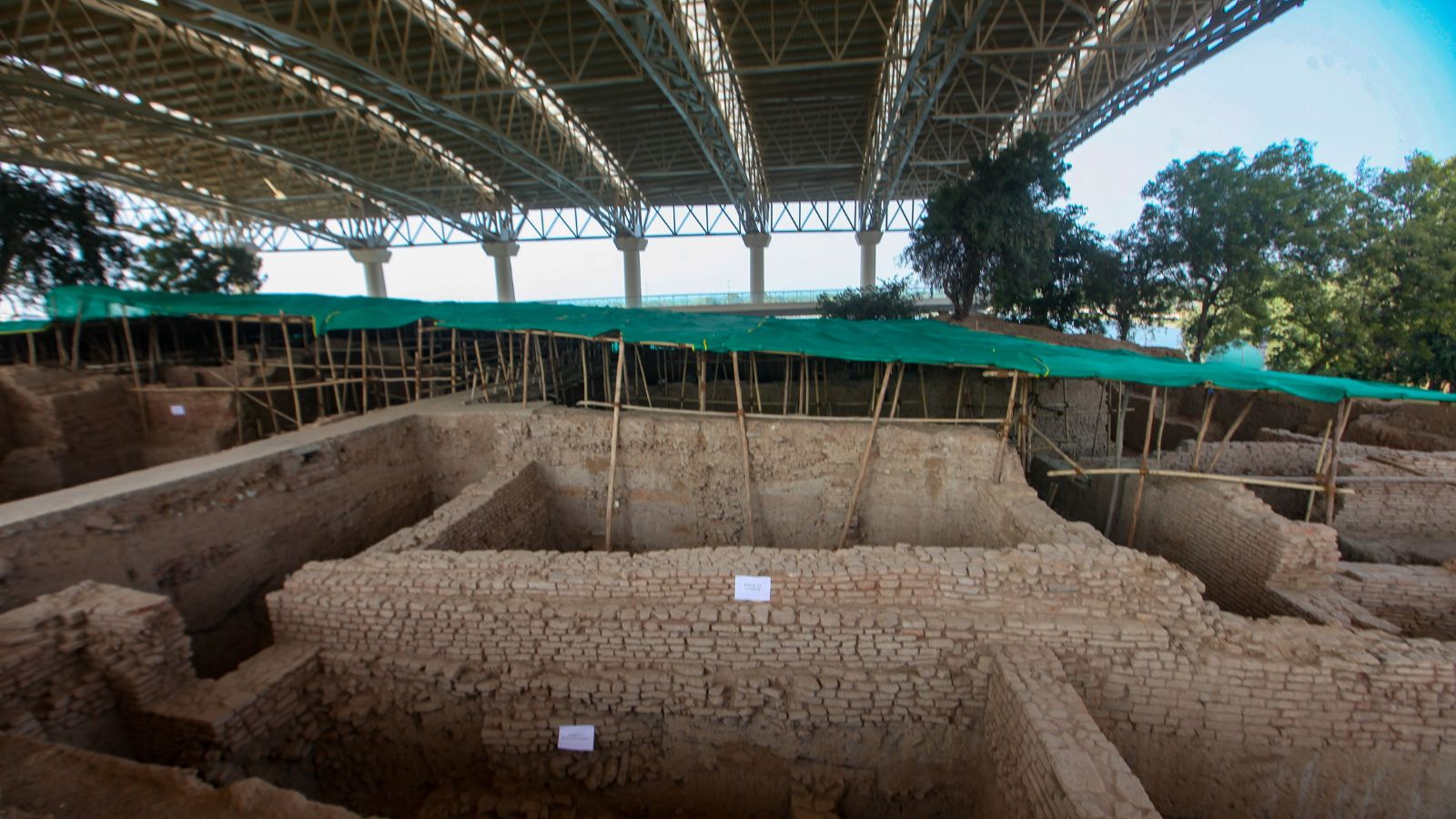 The actual excavated site that is connected with the museum through a walkway for visitors. (Express photo by Bhupendra)Rana
The actual excavated site that is connected with the museum through a walkway for visitors. (Express photo by Bhupendra)Rana
Besides replicas of marker coins recovered from the excavated site, which can be traced on paper with pencils, visitors can also use clay and moulds to make their own terracotta pots and watch them bake digitally. The museum also has activities for children. At a wall section, they can create paintings using watercolours and fill line drawings; in the shell gallery section, they can solve a jigsaw puzzle; they can also design their own bangles on a digital screen and feel them “digitally” on their hand; and they can also use large replicas of beads made of stone, glass and terracotta to make their own necklaces, among other activities.
“Integrated with an experiential walkway over the in situ excavation site, this is the first-of-its-kind museum in India. The thought behind it was to make someone visiting Vadnagar understand the history and importance of this town, which is over 2,500 years old,” Pankaj Sharma, director, Directorate of Archaeology and Museums, Gujarat, tells The Indian Express.
To recreate the history of Vadnagar, the museum has 500 spots with audio guide sensors, eight main films, 30 sub films and various audio-visual galleries.
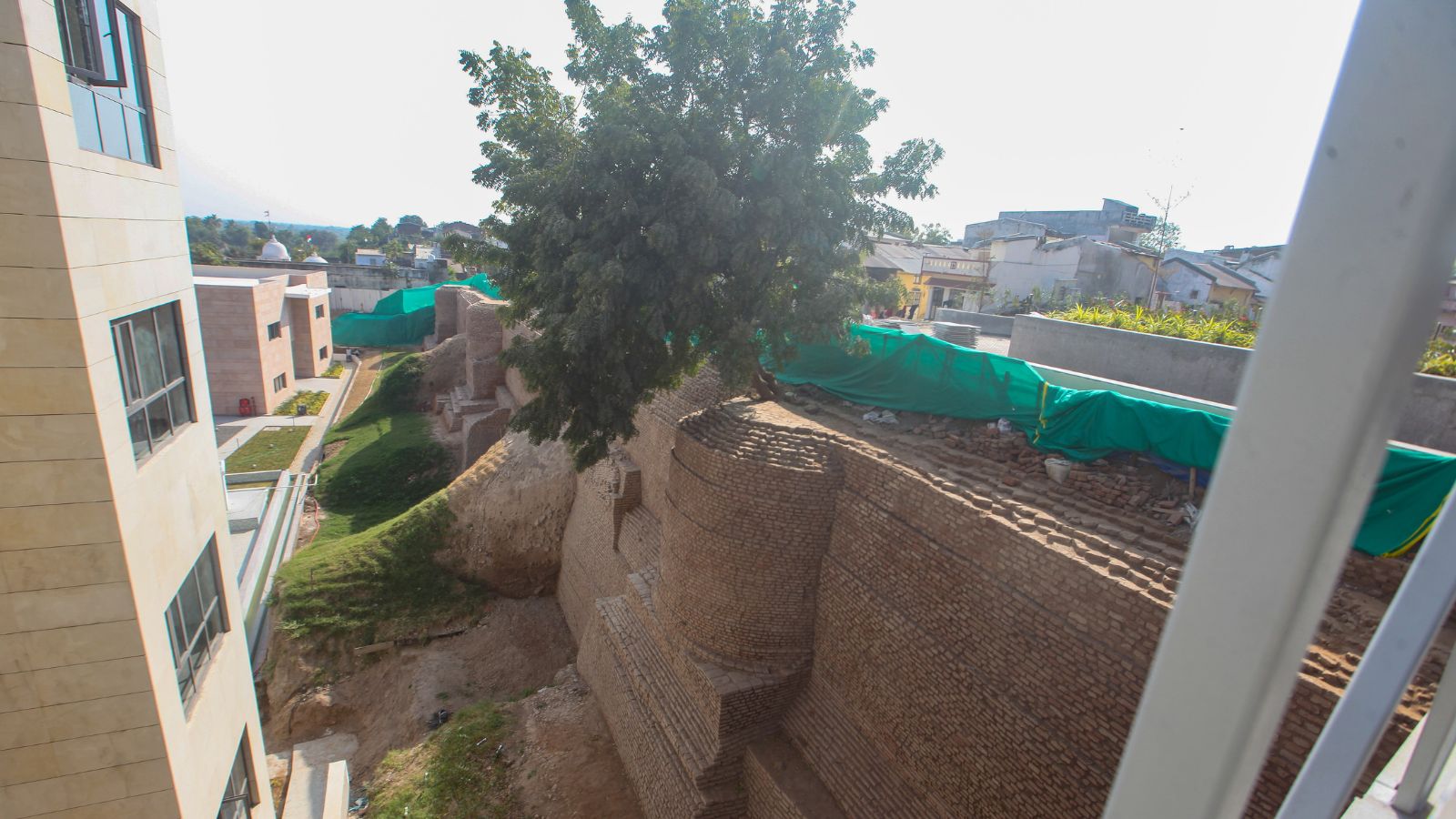 The remains of an actual fort wall are a part of the Vadnagar museum. (Express photo by Bhupendra Rana)
The remains of an actual fort wall are a part of the Vadnagar museum. (Express photo by Bhupendra Rana)
Director Sharma adds, “Using display and technology, the museum attempts to provide an exploration of the city’s evolution through interpretations of events over time. This includes examining practices like water management, the belief in the region being a sacred space and the significant role of Nagar Brahmins, among others.”
Galleries and experiences
While replicas help showcase the city’s evolution, over 6,000 real artifacts have also been displayed in the museum’s galleries.
“The representation of cultural periods (at the museum) involves illustrating various aspects, such as urban lifestyles, beliefs, political situations, social structure and noteworthy events, as gleaned from archaeological and historical discoveries. Excavated artefacts, epigraphic evidence, existing monuments and built environments serve as narrative elements too. The city’s ongoing growth and transformation are conveyed through horizontally stacked layers, with artefacts at the core of the curation process,” says Grace Ann Varkey, superintending archaeologist, Gandhinagar, and the museum’s curator incharge.
The museum has seven galleries and experiences based on thematic frameworks: Reception and Orientation Gallery, Introduction Gallery, City Gallery, Belief Gallery, Lifestyle and Economic Gallery, Future Gallery and Introduction to Excavation Gallery.
The Introduction Gallery starts with a 270-degree projection show. The screen then opens — like a door — taking visitors to the next level, which has been designed to help them understand artefact highlights in relation to India and Gujarat. At the City Gallery, visitors experience a chronological narrative portraying the development of Vadnagar and its evolution via artefacts, replicas, installations, artworks, water management systems, streets, walls, excavation sites, monuments and more.
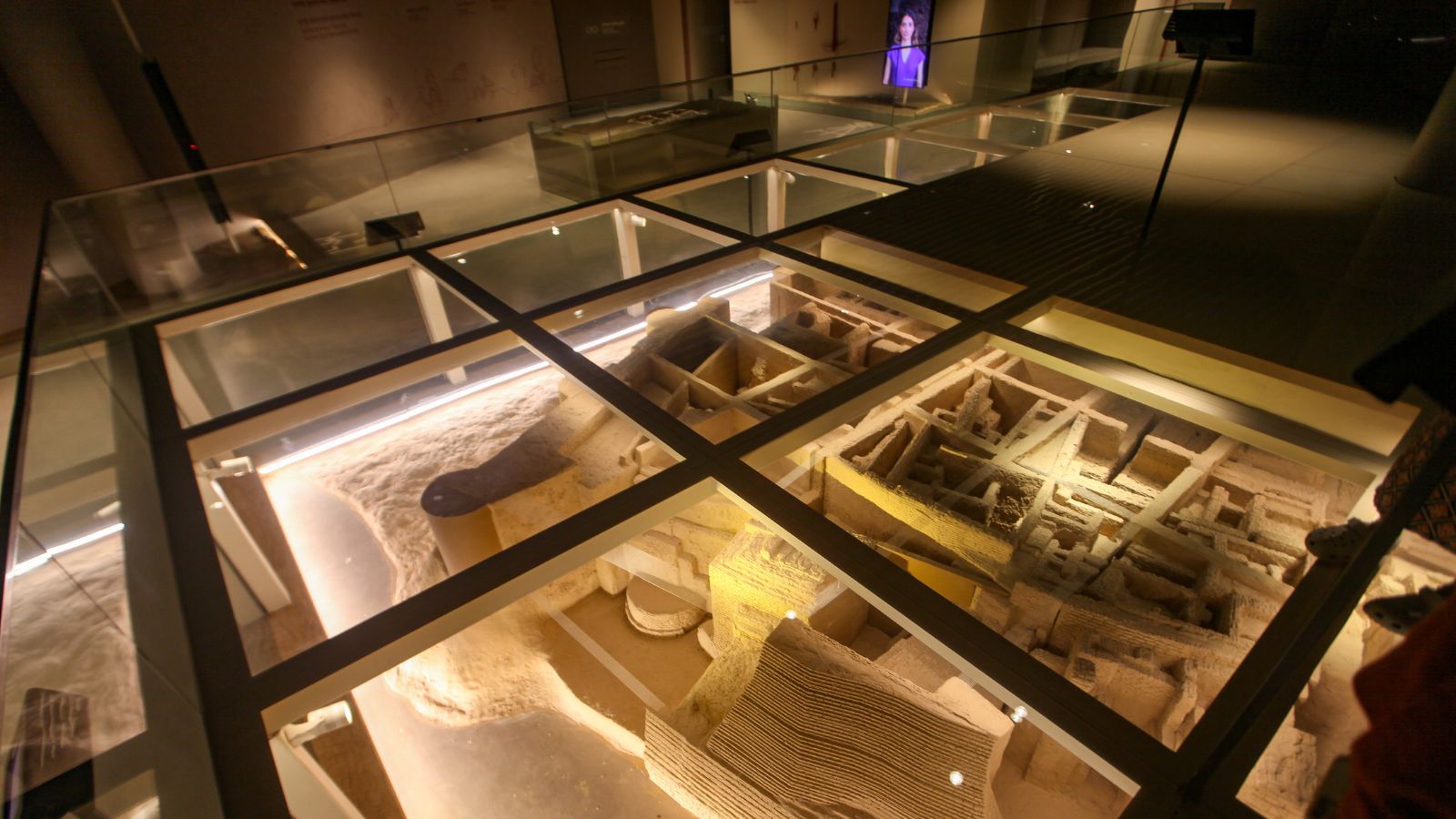 The remains of an actual fort wall are a part of the Vadnagar museum. (Express photo by Bhupendra Rana)
The remains of an actual fort wall are a part of the Vadnagar museum. (Express photo by Bhupendra Rana)
The excavated site gallery is dedicated solely to the Amba Ghat excavations, where a part of the actual dig has been recreated for visitors. The Belief Systems Gallery narrates the town’s religious landscape, including Hinduism, Buddhism, Jainism and Islam, through related artefacts, rituals and existing religious structures. The Lifestyle and Economy Gallery depicts the town’s lifestyle, economic and trade activities, and their evolution over 2,500 years. This gallery includes subsections on agriculture practices, animal husbandry, pottery and technology evolution, global trade linkages and coin, terracotta, shell, glass, stone and ivory objects.
“These sections offer visitors immersive experiences, which include a variety of installations, artefacts, replicas, live workshops, 3D projections, set-ups based on AR and VR (augmented reality and virtual reality) and interactive installations,” says museum curator incharge Varkey.
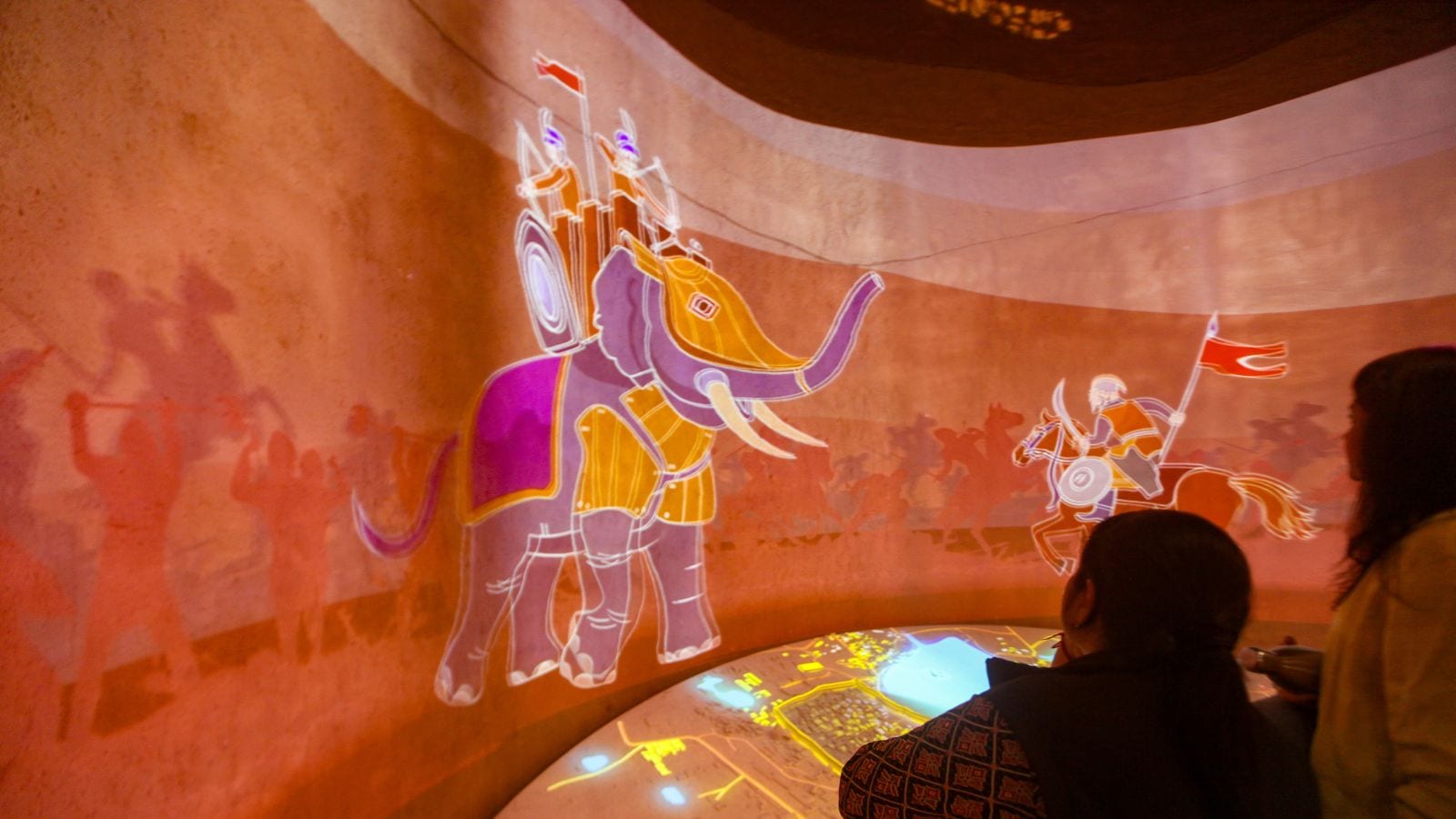 A diorama showcasing the history of Vadnagar in different galleries. (Express photo by Bhupendra Rana)
A diorama showcasing the history of Vadnagar in different galleries. (Express photo by Bhupendra Rana)
The Introduction to Excavation Gallery establishes the context of the excavation site by using a 3-D scaled model of the dig and installations on key findings. The gallery also introduces visitors to archaeological processes, tools and techniques.
The museum also includes three polished steel sculptures by Vibhor Sogani, an Indian artist and designer known for his large-scale public art installations. While one of these sculptures is inside the museum, two others have been installed in the gardens.
Talking about the remaining galleries, Siddha Shah, superintending archaeologist, Rajkot, says, “The Future Gallery contemplates the future of Vadnagar by emphasising our traditional knowledge systems, resilient practices, and the significance of our present actions in the context of future times and generations. Marking the conclusion of the museum experience, visitors are encouraged to contribute to building a wall, both digitally and physically.”









